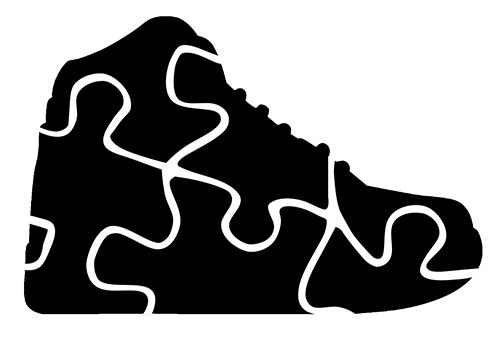
Everything you need to know about shoelaces: history, types and tying tips
Shoelaces are an everyday part of our lives that we often overlook. But did you know that these tiny shoe elements have a rich history and there are many ways to use them? In this article, we'll bring you interesting information about shoelaces, their evolution and practical tips for tying them correctly. Why is it important to tie your shoelaces correctly and what type of laces are suitable for specific shoes? Read on!
Types of shoelaces
There are several types of lanyards available on the market, differing in material, shape and length. Choosing the right laces is important not only for comfort but also for the look of your shoes. Here are the most common types:
1. Cotton laces - classic and very popular due to their strength and simplicity. Suitable for everyday footwear.
2. Waxed laces - more resistant to dirt and moisture due to the wax surface. They are often used in more elegant footwear.
3. Nylon laces - extremely strong and durable, suitable for sports footwear where greater resistance to friction and stress is required.
4. Elastic laces - provide flexibility and speed when slipping on shoes. They are ideal for children or athletes who need to react quickly.
5. Round laces vs. flat laces - round laces are suitable for elegant footwear, while flat laces provide better fastening and stability and are therefore more commonly used in sports footwear.
How to tie your shoelaces properly?
Although tying your shoelaces may seem simple, there are several techniques that can improve the comfort and appearance of your shoes. Poor tying can cause discomfort, loose shoes or even blisters. Here are three popular methods of tying:
1. The basic knot - the classic "rings and loops" method we're all familiar with. Although simple, it can often lead to untying during the day.
2. Lock Lacing - a special lacing technique that helps to better secure the shoe and prevents the heel from slipping. It is ideal for runners or athletes who need a stable shoe fit.
The length of the cords - how to determine it correctly?
When choosing lanyards, it is important to know what length you need. Laces that are too long can look aesthetically unpleasing and risk tripping over them, while lanyards that are too short won't reach the correct fastening. In general:
- For low shoes (e.g. sneakers) you will need laces with a length of 90-120 cm.
- For ankle boots, laces with a length of 120-150 cm are suitable.
- For tall shoes or boots you will need laces 150-180 cm long.
Interesting facts about shoelaces
1. Did you know that according to some studies, people tie their shoelaces an average of 150,000 times in their lifetime?
2. Shoe laces are nowadays also seen as a fashion accessory that can completely change the look of shoes. Coloured or patterned shoelaces can brighten up even the simplest shoes.
3. There are even apps and books dedicated to different ways of tying shoelaces that can make your style even more sophisticated.
Conclusion
Although shoe laces may seem like an insignificant detail at first glance, their selection and proper use can have a big impact on the comfort, functionality and appearance of your footwear. Whether you prefer classic cotton laces or modern elastic versions, choosing the right laces is important for every type of shoe. Try to think about what style of lacing suits you, and see how you can improve not only your comfort but also the overall look of your footwear by simply tweaking your laces.
